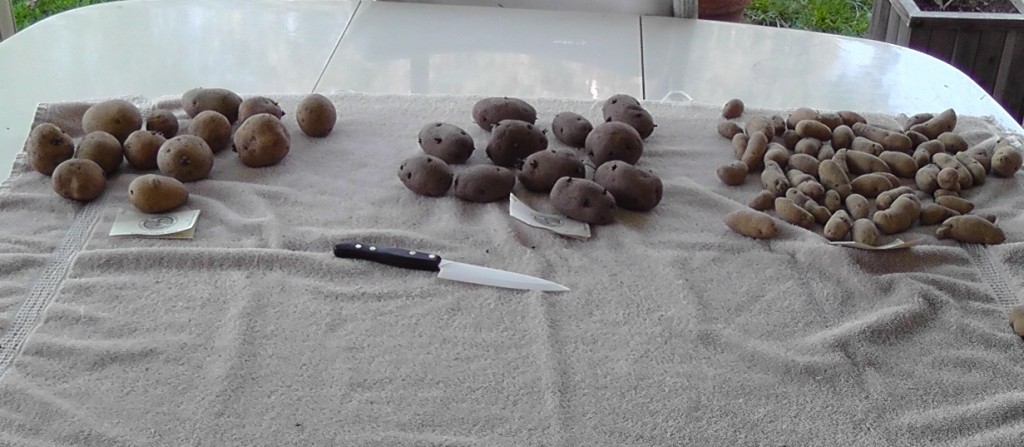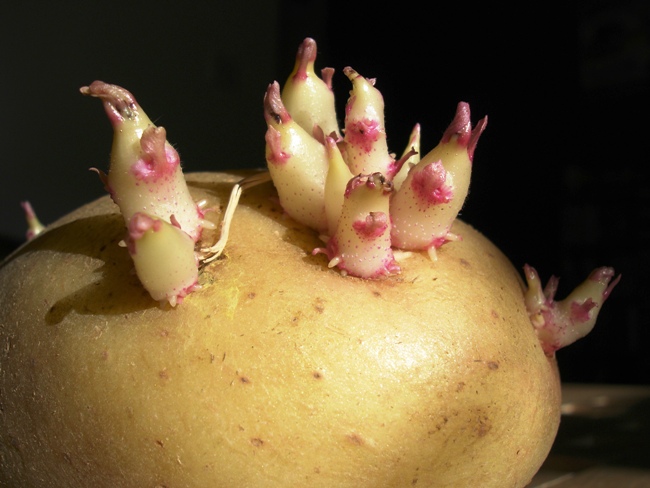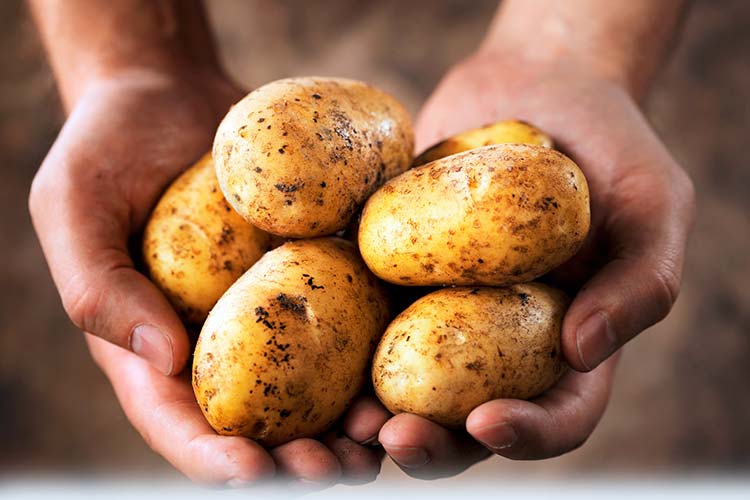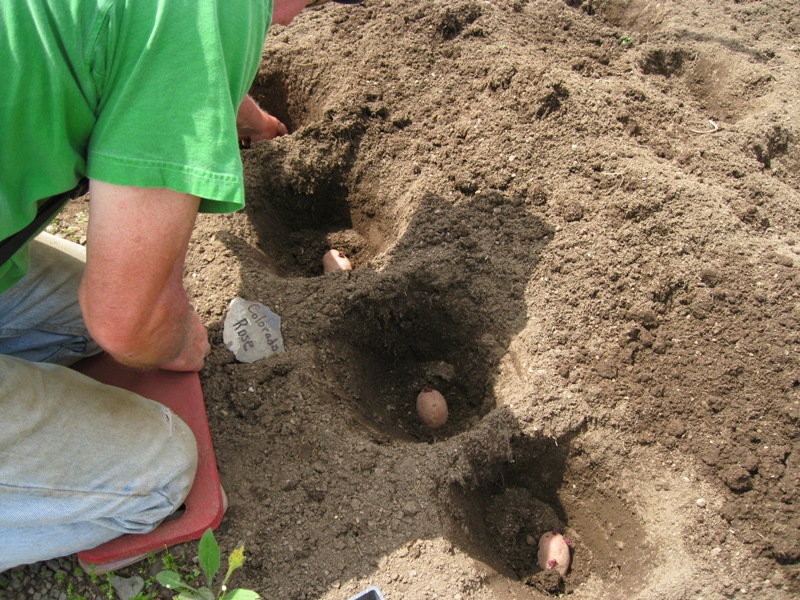How to properly prepare potatoes for planting
Content
When to cook tubers
When should you start preparing tubers for planting in the soil? Before that, about a month before planting the seed in the ground, it is necessary to lay out the tubers for germination. Over a long period of time, they are able to lose a lot of energy and strength necessary to germinate. In order to carry out germination correctly, the seeds should be checked for the presence of unwanted diseases. In order for the tubers to wake up, they should be placed in a room for several days, the temperature in which will be about 20 - 22 degrees, and later they need to be moved to a cooler place (about 10 - 14 degrees).
An important condition is the presence of a sufficient amount of light in the room. In the event that the sprouts after this will be more than 5 cm, they need to be broken off, and new ones will definitely appear in their place. Immediately before planting in the soil, the tubers should turn dark green in color. If your tubers are too large, you can cut them in half before planting in the ground. At the same time, sprouts should be on both halves of the tubers.

Also, before planting potatoes in the soil, the tubers must be processed using special modern preparations for protecting vegetable crops from bacterial and fungal infections - such as "Maxim", Bordeaux liquid, copper oxychloride. This is done correctly this way - the tubers should be soaked for half an hour a day before planting them in the soil in the chosen agent placed in a container, strictly following the instructions. Sprouting tubers today is much more efficient than growing planting material from seeds.
What is it for
Many novice gardeners are wondering - is the process of preparing seed material for planting in the soil so important? Experts and summer residents with one voice say that it is necessary to prepare potatoes for the upcoming spring planting. Since, provided that the preparation is carried out correctly and on time, the necessary biological mechanism is triggered in the tubers, which is directly related to the formation of viable sprouts in the future and the excellent development of the root system of the vegetable culture. This preparatory program provides a unique opportunity after planting in the ground to expect the emergence of earlier shoots than if you use unprepared material for these purposes.
Also, at the preparatory stage, there is an opportunity to select bad tubers - diseased, damaged, and the like - which it is better not to use for planting if you want to get a high-quality and rich harvest. Also, in the process, you can reject those potatoes on which rot is visually visible, the eyes did not wake up, and too weak sprouts were formed. Thus, only good and full of strength planting material is selected.
Program
When choosing a method of preparing potato tubers for planting in the soil, you must proceed from your capabilities and conditions - for example, if the planting material was bought late, then it is not possible to germinate it, since there simply will not be enough time for this.
Preparing to Landing Video
Germination
Germination has been considered the most effective method for many years. This classic method makes it possible to get strong, viable sprouts, from which you get excellent potatoes. Depending on the conditions offered to the tubers, there is dry and wet germination. Dry is carried out in the range of 20 to 40 days in the presence of a sufficient amount of light and a certain temperature. In this case, the color of the sprouts can be different, which largely depends on the type of potato. In the presence of light in the right doses, planting potatoes turn green tubers, which is very important for them to acquire strong immunity against a number of diseases. To ensure even illumination, the tubers should be arranged in a single layer in boxes. It is permissible to use nets or transparent polyethylene bags, but it is imperative to make holes in them for oxygen access. The temperature in the first week and a half should be about 18 - 20 degrees, after which it can be reduced to 10 - 14.
With wet germination of tubers, before planting in the soil, sawdust, peat or humus must be poured into the boxes for placement. Such a container must be kept in a dark room, maintaining the temperature there at about 12 - 15 degrees. At the same time, tubers in a moist substrate can form not only sprouts, but also a strong root system, while they will lose less liquid and substances useful for the plant. Combined germination is also used - they combine the dry and wet method. To do this, the tubers are first germinated for about three weeks under light, after which they are placed in a moist substrate for another week and a half, so that the sprouts that appear after the first stage can form high-quality roots.
Wilting
This method is usually used in order to awaken the eyes of the potato and make the sprouting process as fast as possible. In order to carry out wilting, you need heat with a temperature above 16 degrees. Although the presence of light is not necessary, nevertheless, with it, the planting material is able to acquire a stable immunity to various kinds of ailments that lie in wait for vegetable crops at every step. Wilting is good when you need to germinate potatoes as soon as possible. To do this, the potatoes are laid out in one layer and kept warm until the rudiments of the first sprouts appear - most often this requires from one to several weeks. At the same time, the planting material is able to lose a certain amount of liquid, but it gains enzymes that will help it to quickly awaken the eyes and accelerate the growth of vegetable shoots.
Warming up
If you plant the potatoes, which you got cold from the cellar or a special pit, into the ground without preliminary preparation, then you will have to wait a very long time for the emergence of seedlings. To quickly prepare the potato for planting, provided that you did not have time to germinate it, you can warm it up three days before planting. Do not use too high a temperature for heating, as this can negatively affect the quality and taste of your potatoes in the future. The optimal indicator is considered to be 20 - 22 degrees, which should be in the room where the root crop, extracted from the cold cellar, is placed, immediately before planting in the ground. At the same time, for better adaptation of potatoes, you first need to place it at a temperature of about 10 - 15 degrees, and then already at 20 - 22.
Another important nuance - if your potatoes were stored in a well-equipped storage facility, then the temperature there was kept at a level close to natural. That is, the dormant period for the root crop, in principle, has not yet ended. Since the chilled vegetable was well stored due to the slowing down of natural physiological processes, you cannot plant it right away. The tubers should first be awakened, for which they are also placed in a warm place. But at the same time, the temperature must be raised very carefully and gradually, since its sharp jump can cause unwanted stress in the root crop.
Seedling
A great way to get a good harvest is the well-known seedlings. To do this, a layer of sawdust is placed in the boxes, after which the tubers are laid out, the top is covered with another layer of sawdust (no more than three cm), and watering is carried out regularly.
Instead of sawdust, it is quite acceptable to take peat or vermiculite. But if the seedlings are planted together with ordinary tubers, then the sprouts may be threatened with death from the first frost. Therefore, the seedling method is usually used infrequently, only in order to get an early harvest of potatoes. During frosts, fragile shoots must be covered with a dense non-woven material. For growing for seedlings, it is recommended to take only those potato varieties that have an early ripening period.
Sometimes potato tubers can start sprouting on their own. At the same time, one should not allow the appearance of too large sprouts, since they not only take away a lot of necessary vitality from the planting material, but are also capable of breaking during planting. You can simply break out such untimely sprouts, thus, you will delay the germination of potatoes for the right time. And you can use unexpectedly grown shoots as seedlings. Because when the sprout reaches 4 to 6 cm in length, it already has the makings of its own roots.
This allows you to separate it from the tuber and carry out wet germination in peat, soil mixture prepared in advance, even sawdust is suitable for these purposes. The sprout will need to be placed in a container with about two-thirds of this filling. The tubers that remain will be able to sprout over time, and we will also get excellent planting material from the seedlings. Experienced gardeners use this option even if there are not enough planting tubers.
Since our people are very resourceful, in the absence of the necessary amount of material for planting - we are talking about tubers, not seeds - experienced gardeners sometimes use cut tops of potatoes. Within five days, they must be kept at room temperature, during which the cut site is dried, which prevents the planted root crop from rotting and reduces the risk of disease. On the sixth day, the pieces are placed in thin layers in prepared boxes, covered with sand or earth.
Video "How to prepare the soil and tubers"
If you do not know how to properly prepare the soil and potato tubers for planting, this video is for you.






